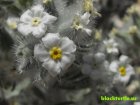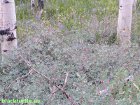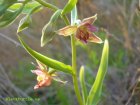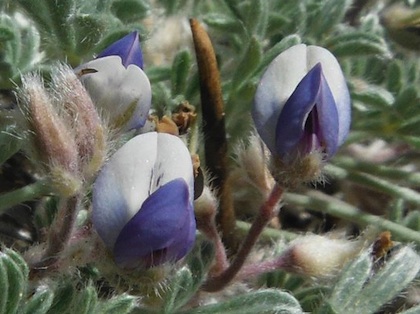
|
Matted Lupine
January/February
Approximately eighty-two species of lupine grow naturally in
the state of California. At least twenty-four of these species grow in, or in
reasonably close proximity to, Death Valley. Like other members of the Pea Family (Fabaceae),
lupines produce flowers which are different from the typical flower produced
by most plants. In fact, there are special terms used to describe the
parts of a pea flower: banner, wing, and keel. The lupine shown here is known as Matted
Lupine and it is prevalent in the southern Sierra Nevada range.
(Click here for more info!)
|

|
Sand Wash Groundsel
March/April
Common names can be confusing and there is a list containing a total of
fifteen common names for this plant. This underscores the importance
of having scientific names for plants. This one is called Senecio flaccidus
and it is a member of the Sunflower Family. A particularly interesting
characteristic of sand wash groundsel is that it sometimes blooms in the fall
following adequate summer rain. By the way, the genus Senecio includes quite
a few species which all produce yellow, daisy-like flowers.
(Click here for more info!)
|

|
Bigelow's Monkeyflower
May/June
Likely to be found anywhere from the valley floor to darn near the mountain
top, this flower grows pretty much all over the place throughout the
southwestern states. To be more precise the elevation range at which this plant grows
is from 400 feet to about 9000 feet. Not only is it likely to pop up in
diverse locations, it also may be in bloom anytime from February until
November. Due to its small stature it is often cited as an example of what
is called a belly flower.
(Click here for more info!)
|

|
Tiger Lily
July/August
The summer is a great time to get out and to visit locations at higher
elevations, and the majority of mountain ranges present a multitude of wildflowers in bloom during this
time of year. One of the most spectacular flowers to happen across while out
hiking is the Tiger Lily. More frequently than not, this flower is encountered growing
along a streambank under the shade of tall trees. Although the plants may
grow up to six feet tall, most often they are considerably shorter. The
spectular yellow-orange flowers are the main attraction and they are easily
conspicuously gorgeous enough to capture the attention of nearly any hiker!
(Click here for more info!)
|
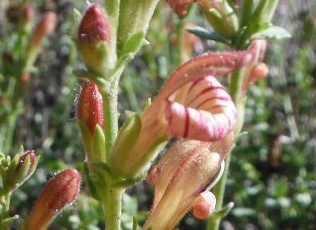
|
Buckskin Keckiella
September/October
If you do much hiking at upper elevations during the summer in the Death
Valley area, you might happen to notice this rather interesting little
flower. Ranging in color from brownish yellow to cream, hundreds of these
small flowers may be displayed on a single plant at any given time. You will
discover that these small, tubular flowers are rather attractive if you take a close
look at them. Besides an interesting shape, they have stripes which may be
brown or purple or some shade in between.
(Click here for more info!)
|
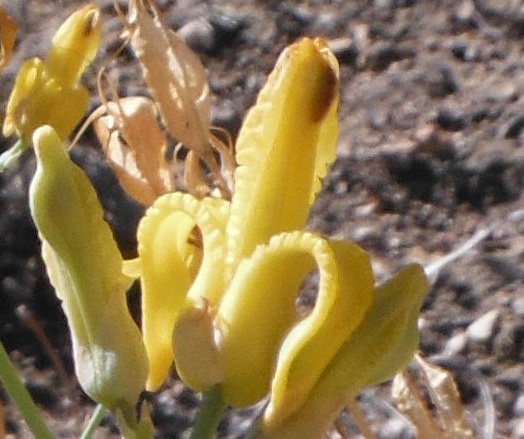
|
Golden Eardrops
November/December
The seeds of certain plants will not germinate unless exposed to fire.
Golden Eardrops is one such plant and for this reason it is
likely to be found growing in locations that have been hit by wildfires in the
recent past. The unusual flowers of Golden Eardrops make it easy to
recognize. Another plant producing similar flowers is known as Steer's Head.
By the way, both plants are members of the Poppy Family.
MORE INFO:
Golden Eardrops
Steer's Head
|
| 
